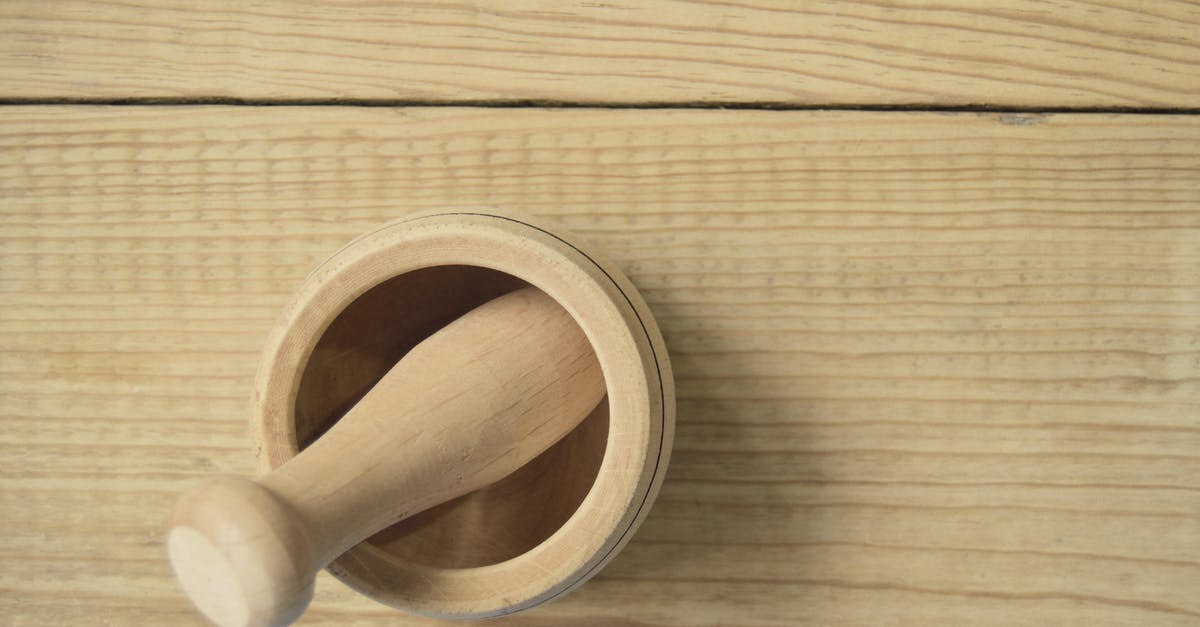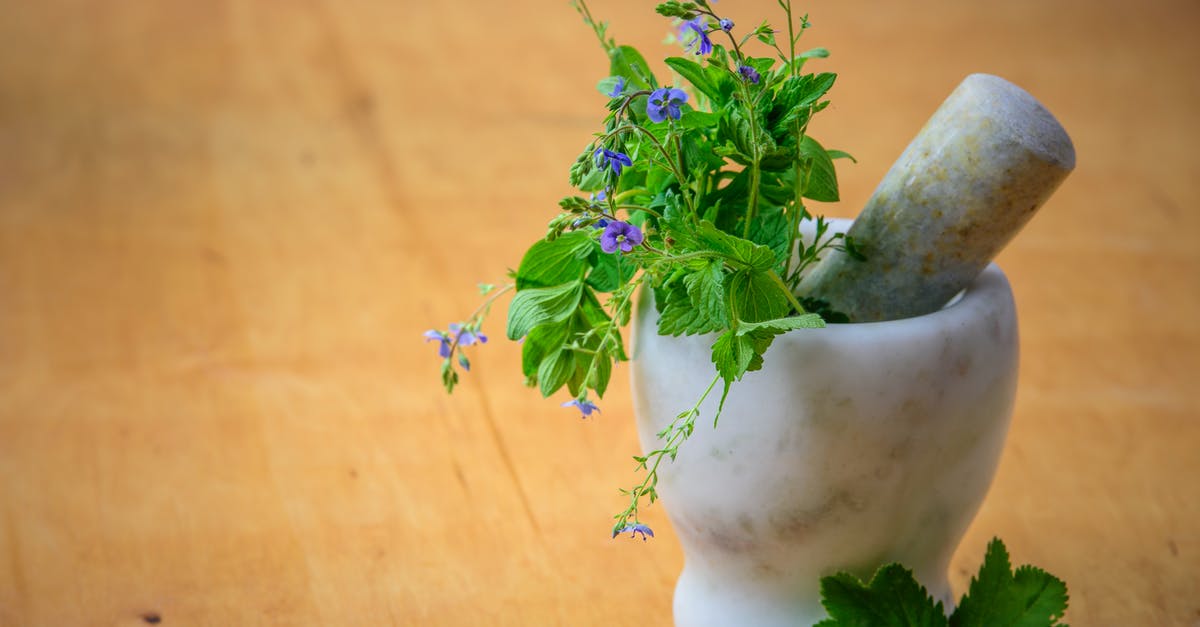What is a good mortar and pestle crushing technique?

You'd think using mortar and pestle would be pretty straightforward, yet when I try to make pesto half of time is spent spooning the stuff that sticks to the pestle and shuffling around the contents inside the mortar so they don't spill over.
This serious eats video makes using one look so easy. If I tried to use my Ikea granite M&P like that video all the contents would spill over.
Best Answer
Were you just working from the video, or following the recipe? They added some coarse salt when they started with the garlic, which isn't apparent in the video. The salt acts as an abrasive when you're crushing wet things (garlic, herbs, etc.), so it takes a lot less time and effort. I also tend to use the 'smash with knife' technique (even if they're already peeled, and crush them really hard after they're peeled), so they have a head start.
They also added the basil a little bit at a time -- too much and it'll just slip against itself, taking much longer to break down. Although he was adding a 'handful' at a time, if we look at the version annotated with pictures, we can see that he's got a rather large mortar. If you're working with something smaller, you'll need to add less with each addition.
As for when things start coming up the sides, I'll grind with a more downward motion (almost pounding), as I go around the edges to push things back in. But this also be a sign that you're filling the mortar too much. (Mine is about 4" across, but rather deep. I don't know if this technique would work as well for the ones that dished without having the vertical sides)
All that being said, I normally make mine in a blender. (which does require blending in the oil, as you need the liquid so it'll move). In part it's because it's how I learned to do it from my mom, but I also tend to make huge batches** (like when things start getting cold and I strip all of my basil plants yielding a lot of leaves.)
**Pesto (at least, blender pesto) freezes well if you leave out the cheese. My mom would use ice cube trays to freeze it in, but if you're doing that, make sure you keep a separate tray (or 6, if making large batches) so you don't end up with garlic flavored ice. I tend to freeze an ice tray or two, and freeze the rest in muffin tins.
...
I can't help with whole spices -- I've never gotten the hang of when you pound vs. grind, and how much to add at time, or what order to go in (hard to soft? soft to hard? large to small? small to large?) so I tend to make a bit of a mess of things.
Pictures about "What is a good mortar and pestle crushing technique?"



How do you crush pestle and mortar?
Best Overall: Chef Sofi Granite Mortar & Pestle. Best Budget: Health Smart by Maxam Granite Mortar & Pestle. Best for Small Batches: Gorilla Grip Original Granite Mortar & Pestle. Best for Large Batches: Williams Sonoma Marble Mortar & Pestle.What is the best type of mortar and pestle to use?
The ideal material for a mortar and pestle is something hefty and very hard. It shouldn't be so rough as to be porous or difficult to clean, nor should it be so smooth as to be slippery.How smooth should a mortar and pestle be?
So how do you remove mortar from brick? Start by grinding the top and bottom of the horizontal (bed) joints with an angle grinder (Photo 1). Hold the grinder with both hands to keep it steady and avoid grinding into the bricks. You only need to grind 3/4 in.Jamie Oliver talks you through using a pestle and mortar
Sources: Stack Exchange - This article follows the attribution requirements of Stack Exchange and is licensed under CC BY-SA 3.0.
Images: Miguel Á. Padriñán, PhotoMIX Company, Yan Krukov, Ron Lach
